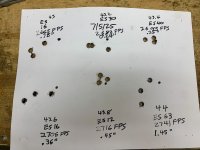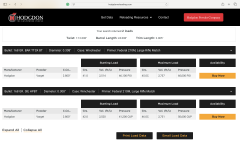Yes indeed. I can't imagine trying to begin reloading, and learning precision fundamentals with the rifle, at the same time. One variable at a time.
My thoughts on learning the reloading process -- it depends on your temperament (tool user or not), your instinctive attention to detail, your observational skills, and your understanding of combustion mechanics. All of these are important factors. I wonder how many understand combustion mechanics, or basic inorganic chemistry. You can reload w/o knowing such things but IMO understanding them will help you understand the whole process and the end result cartridge you've loaded.
I get you, and agree, mostly…
Hate to be a “reloading heretic” some more (actually, that’s not true, and is kinda my whole vibe here lol), but IMHO the only combustion mechanics reloaders really need to be aware of is doing it like NASA does it: more fuel (powder) = more speed/pressure/recoil, less fuel = less speed/pressure/recoil, and that the less case fill you have, the more important it is that every charge is the same to the nearest kernel or your SDs will get shitty (probably loosely related to something like a race car’s carburetor or fuel injection: run it too lean and it’ll stall more easily and get erratic if shit isn’t dialed in, running it lean means it becomes more important that the fuel delivery is consistent and precise).
When they all come out the same, they all tend to want to go through the same hole. Getting there, and doing it batch after batch is the hard part.
Last edited:



